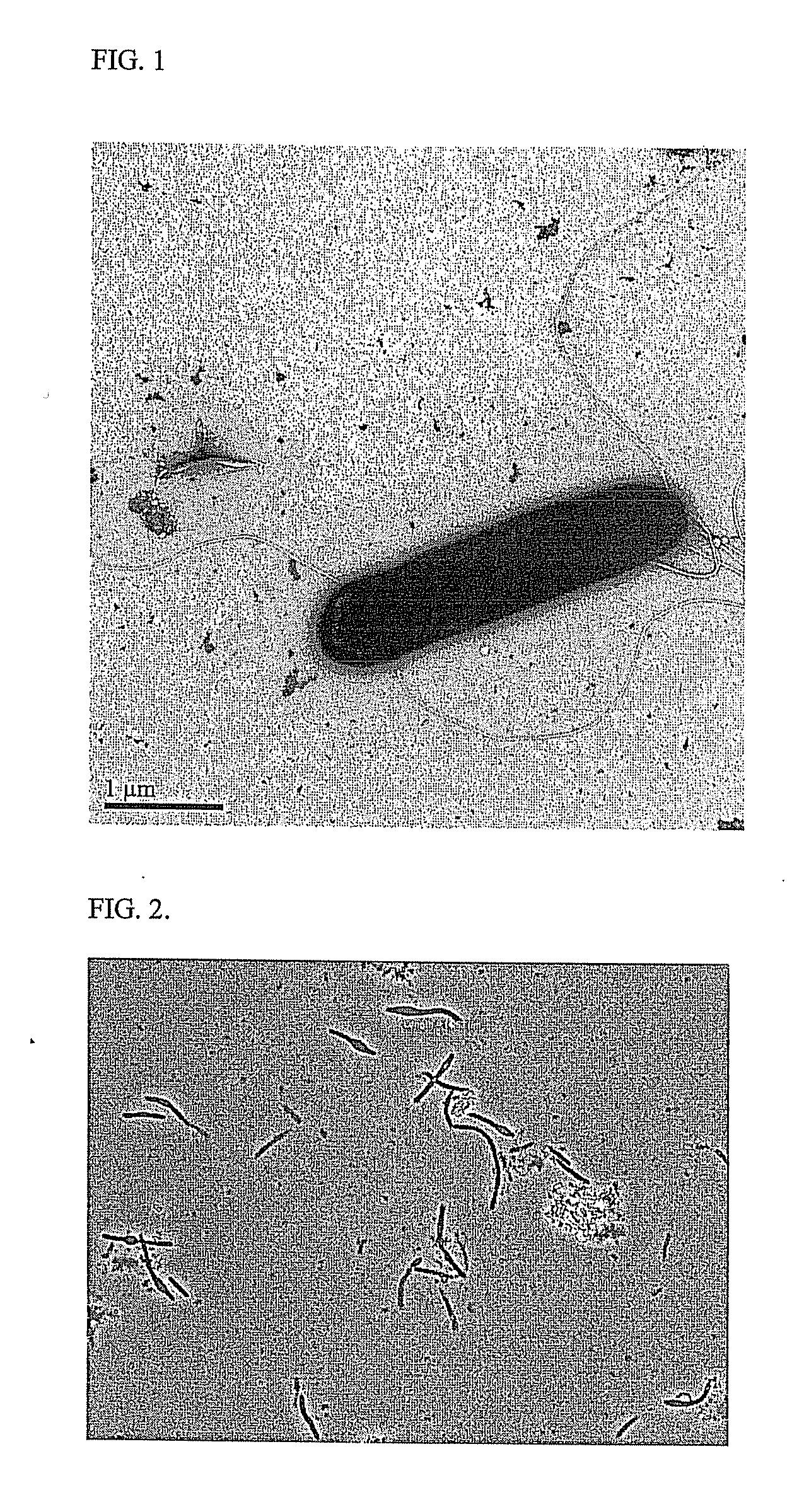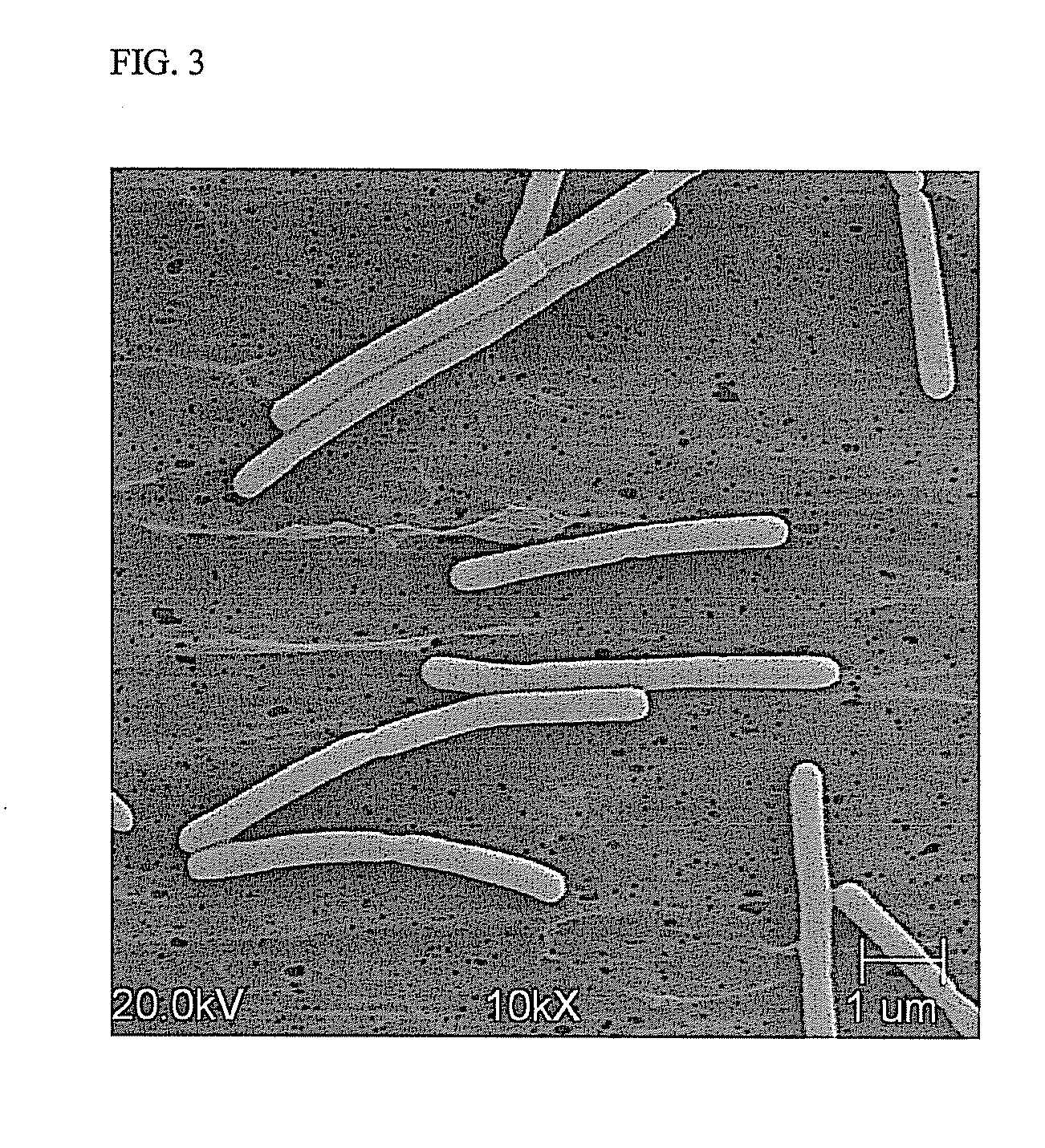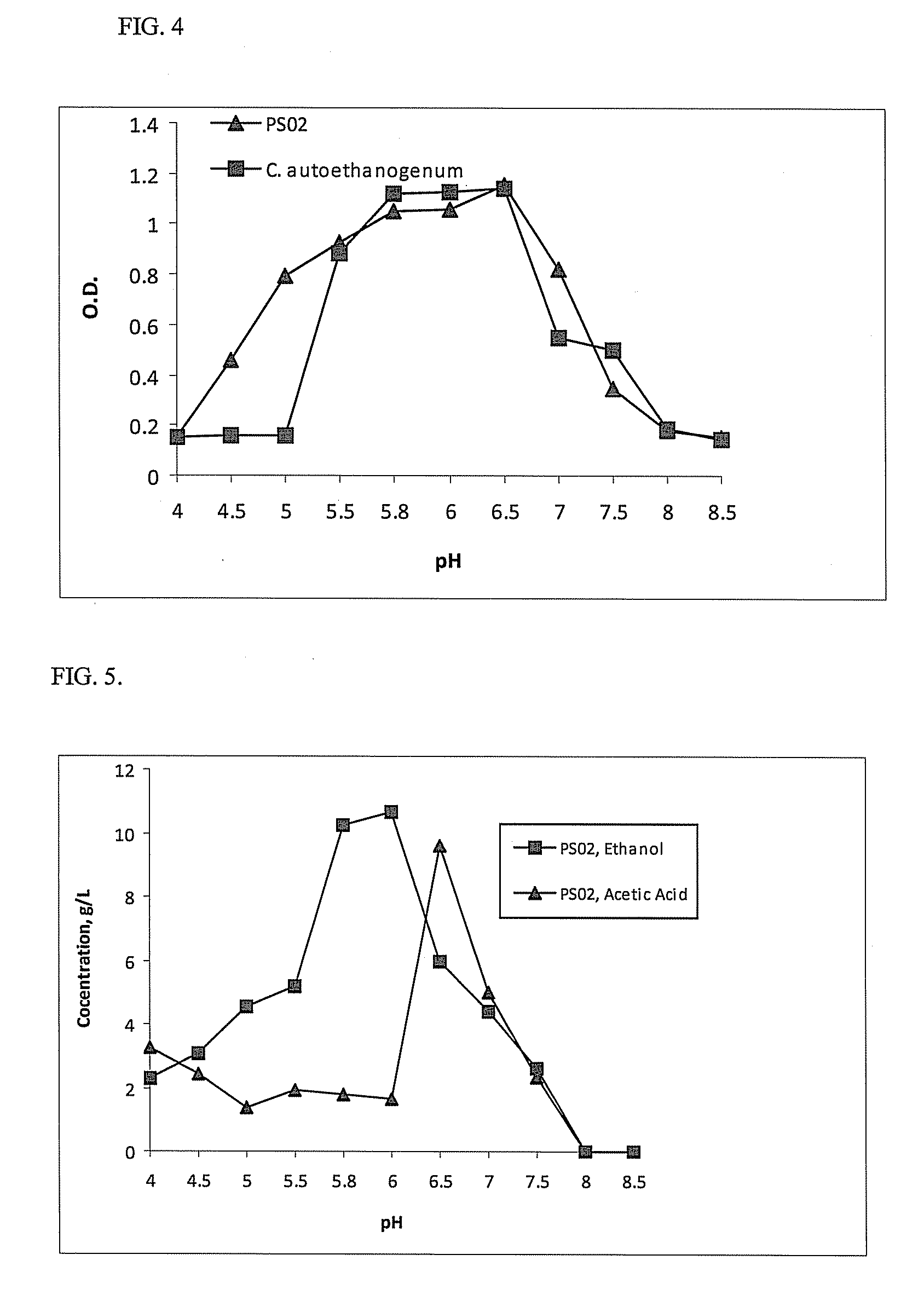Novel Ethanologenic Clostridium species, Clostridium coskatii
a technology of ethanologenic clostridium coskatii and clostridium coskatii, which is applied in the field of new bacterial species, can solve the problems of increasing the cost of materials, plant design, waste management, and corn being a component of many human and animal foods
- Summary
- Abstract
- Description
- Claims
- Application Information
AI Technical Summary
Problems solved by technology
Method used
Image
Examples
example 1
[0063]Colonies of Clostridium coskatii (PS02) appeared circular, were white to translucent in color, and slightly raised at the center on Acetogen C3 agar plates. The color darkened to tan or light brown when the colony age exceed 6-7 days. Cells of Clostridium coskatii (PS02) were rarely motile, rod-shaped, stained gram-positive, and occurred singly or in chains. An outer cellular structure consistent with a 40 to 45 nm cell wall was seen in electron micrographs of thin sections of C. coskatii cells, which supports the gram-positive assignment. In early exponential growth, cells were 0.75 μm by 3-4 μm and were peritrichously flagellated (FIG. 1). Spores occurred infrequently, but when present appeared as mid-terminal to terminal swelling, and were most often club-like in appearance (FIG. 2). This property of spore morphology was similar to Moorella thermoacetica (Drake et al., 2006), but significantly different than the non-swelling spore morphology observed for ...
example 2
[0067]Clostridium coskatii (PS02) was strictly anaerobic. Chemolithoautotrophic growth in the absence of yeast extract, occurred with H2+CO2 or CO. Chemoorganotrophic growth was observed with the following substrates: Pyruvate, succinate, citrate, malate, xylose, mannose, fructose, glucose, salacin, arginine, glutamate, histidie, glutamine, serine, alanine, alpha-ketoglutarate, oxaloacetate, phosphoenol pyruvate, shikimic acid, iso-citrate, sucrose, and malonic acid. Table F shows a substrate matrix comparison between Clostridium coskatii (PS02).
[0068]Six organic substrates differentiated C. coskatii from three ethanologenic Clostridia: C. ljungdahlii PETC, C. ragsgalei, and C. ljungdahlii. These differentiating substrates included D-gluconic acid, citrate, maleic acid, rhamnose, arginine, and oxaloacetic acid (Table F). These differences indicate differences in the metabolic regulation or catabolic genes required for metabolism of these substrates among these four bacteri...
example 3
Antibiotic Susceptibility
[0073]The antibiotic susceptibility of Clostridium coskatii (PS02) was evaluated in Acetogen C3 media against 17 antibiotics at a concentration of 100 μg / mL (Table G). Clostridium coskatii (PS02) was resistant to erythromycin, nalidixic acid, spectinomycin, colistin, penicillin, streptomycin, and chloramphenicol. Three antibiotics differentiated C. coskatii from three ethanologenic Clostridia: C. ljungdahlii PETC, C. ragsgalei, and C. autoethanogenum. These differentiating antibiotics included, erythromycin, carbenicillin, and chloramphenicol (Table J). Resistance to erythromycin and carbenicillin was shared by Clostridium coskatii (PS02) and Clostridium ljungdahlii PETC; however, resistance to chloramphenicol was trait demonstrated only by Clostridium coskatii (PS02).
TABLE GAntibiotic susceptibility patterns for various clostridial species using anantibiotic concentration of 100 μg / ml (+ indicates growth).AntibioticautoethangenumragsdaleiPETCPS02Ampicillin−...
PUM
| Property | Measurement | Unit |
|---|---|---|
| mean cell retention time | aaaaa | aaaaa |
| mean cell retention time | aaaaa | aaaaa |
| time | aaaaa | aaaaa |
Abstract
Description
Claims
Application Information
 Login to View More
Login to View More - R&D
- Intellectual Property
- Life Sciences
- Materials
- Tech Scout
- Unparalleled Data Quality
- Higher Quality Content
- 60% Fewer Hallucinations
Browse by: Latest US Patents, China's latest patents, Technical Efficacy Thesaurus, Application Domain, Technology Topic, Popular Technical Reports.
© 2025 PatSnap. All rights reserved.Legal|Privacy policy|Modern Slavery Act Transparency Statement|Sitemap|About US| Contact US: help@patsnap.com



